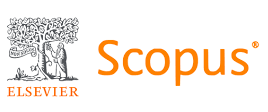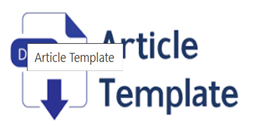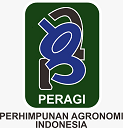Author Guidelines
All papers submitted to the journal should not have been published or submitted for publication elsewhere. The official language of the manuscript to be published in Agro Bali: Agricultural Journal is English or Bahasa Indonesia. However, recently we have preferred processing articles in English, and gradually, the articles published are all in English.
1. General Author Guidelines
All manuscripts must be submitted to Agro Bali: Agricultural Journal Editorial Office using Online Submission at E-Journal portal address:
https://ejournal.unipas.ac.id/index.php/Agro/about/editorialPolicies#custom-1, where author registers as the Author online. If authors have any problems with the online submission, please contact Editorial Office at the following email: Editor in Chief
2. Manuscript Template
The manuscript should be prepared according to the following author guidelines in the MS Word article template: download the template of the Agro Bali: Agricultural Journal
3. Reviewing of manuscripts
Every submitted paper is independently reviewed by at least two peer-reviewers. The decision for publication, amendment, or rejection is based upon their reports/recommendations and made by Editor. If two or more reviewers consider a manuscript unsuitable for publication in this journal, a statement explaining the basis for the decision will be sent to the authors within three months of the submission date.
4. Revision of manuscripts
Manuscripts sent back to the authors for revision should be returned to the editor without delay. Revised manuscripts can be sent to the editorial office through the Online Submission Interface (https://ejournal.unipas.ac.id/index.php/Agro). The revised manuscripts returned later than three months will be considered as new submissions.
5. Editorial Office of Agro Bali: Agricultural Journal
All correspondences should be sent to the following Editorial Office:
Jhon Hardy Purba (Editor-in-Chief)
Agriculture Faculty
Panji Sakti University
Jl. Bisma No. 22, Banjar Tegal, Singaraja, Bali, Indonesia - 81125
WhatsApp +6287831876766; 0362-23588
Email: jhon.purba@unipas.ac.id; jhonhardy@yahoo.com
6. Guideline for Online Submission
The author should fulfill the form as detail as possible where the star marked form must be entered. After all form textbox was filled, the Author clicks on “Register” button to proceed the registration. Therefore, the Author is brought to an online author submission interface where Author should click on “New Submission”. In the Start a New Submission section, click on “’Click Here’: to go to step one of the five-step submission process”. The following are five steps in online submission process:
- Step 1 - Starting the Submission: Select the appropriate section of the journal, i.e. Original Research Articles, Review Article, or Short Communication. Thus, the author must check-mark on the submission checklists. An author should type or copy-paste Covering Letter in Letter to Editor.
- Step 2 – Uploading the Submission: To upload a manuscript to this journal, click Browse on the Upload submission file item and choose the manuscript document file (.doc/.docx) to be submitted, then click "Upload" button until the file has been uploaded. Do not upload cover letter and other supplementary files here.
- Step 3 – Entering Submission’s Metadata: In this step, detail authors metadata should be entered including marked corresponding author. After that, manuscript title and abstract must be uploaded by copying the text and paste in the textbox including keywords.
- Step 4 – Uploading Supplementary Files: Supplementary file should be uploaded including Covering/Submission Letter. Therefore, click on Browse button, choose the files, and then click on Upload button.
- Step 5 – Confirming the Submission: Author should final check the uploaded manuscript documents in this step. To submit the manuscript to Agro Bali: Agricultural Journal, click Finish Submission button after the documents are true. The corresponding author or the principal contact will receive an acknowledgment by email and will be able to view the submission’s progress through the editorial process by logging in to the journal web address site.
After this submission, the Authors who submit the manuscript will get a confirmation email about the submission. Therefore, Authors can track their submission status at any time by logging in to the online submission interface. The submission tracking includes the status of the manuscript review and editorial process.
7. Author Fee
This journal charges the following author fees. Article Submission: 0.00 (IDR). Authors are not required to pay an Article Submission Fee as part of the submission grass to contribute to review costs. Article Publication Charges (APCs): 5,000,000 (IDR). If your manuscript is accepted for publication, you will be asked to pay an Article Publication Fee to cover publication costs. The publishing cost is IDR 5.000.000 (maximally ten pages for each article). There will be extra charges for extra pages IDR 100,000 per page for a maximum of 15 pages. Readers can read and download any full-text articles free of charge. For certain articles that are substantively strong but still lack linguistic quality, it is possible to apply an additional fee for proofreading.
8. User Rights
All articles published in Open Access will be immediately and permanently free for everyone to read and download.
9. Manuscript Preparation Guidelines
9.1. General Organization of Paper
The paper will be published in Agro Bali: Agricultural Journal after the peer-reviewed process and decided as “Accepted” by Editor. The final paper layout will be reproduced by Editorial Office of Agro Bali: Agricultural Journal. The final paper layout in PDF type, known as “Uncorrected Proof” should be corrected by Author. The final corrected proof will be published first in “Article In Press” pre-issue.
According to Engelmore and Morgan [1], manuscript content should, in general, be organized in the following order: Title; Authors Name; Authors Affiliation; Authors Email; Abstract; Keywords; Introduction; Methods; Results and Discussion; Conclusions and Suggestions; Acknowledgments; and References.
9.2. Section Headings
Three levels of heading are allowed as follows:
- Level 1 (Heading1 format) - 12pt, Times New Roman bold, Title Case, left-justified
- Level 2 (Heading2 format) - 12pt, Times New Roman bold, left-justified
- Level 3 (Heading3 format) - 12pt, Times New Roman bold italic, left-justified
9.3. Body Text
The body of the text is a set of body text paragraphs defined as follows:
- 12pt Times New Roman
- One space
- Spacing after the heading is 1
- Spacing before the new heading is 1
- Indentation for the first line is 1 cm
9.4. Bullets
Bullet and numbering within body text are not allowed. All sentences should be typed as descriptive paragraph.
9.5. Tables
Tables are sequentially numbered with the table title and number above the table. Tables should be centered in the column OR on the page. Tables should be followed by a line space. Elements of a table should be single-spaced. However, double spacing can be used to show groupings of data or to separate parts within the table. Table headings should be in 10pt not bold. Tables are referred in the text by the table number, e.g., Table 1. Do not show the vertical line in the table. There is only horizontal line should be shown in the table, as well as table heading.
9.6. Figures
Figures are sequentially numbered commencing at 1 with the figure title and number below the figure as shown in Figure 1.
9.7. Equations
The equation should be prepared using MS Equation Editor (not in image format). The equation number is to be placed at the extreme right side.
9.8. Units, Abbreviations, and Symbols
Metric units are preferred and should be consistent throughout body text. Define abbreviations and symbols at the first time as they are introduced in the text.
9.9. Manuscript Heading, Font, and Spacing
The manuscript should be typed using word processors (Microsoft Word or Open Office) software. The font used throughout the paper is Times New Roman. The paper size is A4 (i.e., 210 x 297 mm), two-column format with a 2.5 cm margin at the top, a 2.5 cm margin at the bottom, 3.0 cm margin on the left, and 3.0 cm margin on the right. Lines are one spaced, justified. Page numbers should be included in the text located in the footer section of each page. Use of pronouns such as I, we, etc. is to be avoided.
Manuscript submitted to this journal should follow the heading below, except for the review article: Title; Authors Name; Authors Affiliation; Authors email; Abstract; Keywords; Introduction; Methods; Results and Discussion; Conclusions and Suggestions; Acknowledgments; and References.
9.10. Paper Title
This is your opportunity to attract the reader’s attention. Remember that readers are the potential authors who will cite your article. Identify the main issue of the paper. Begin with the subject of the paper. The title should be accurate, unambiguous, specific, and complete. Do not contain infrequently-used abbreviations.
The title of the paper should be in 14pt bold Times New Roman, capitalized, and be centered. The title should have 0 pts space above and below.
9.11. Authors Name, Affiliations, and Email
Write Author(s) names without a title and professional positions such as Prof, Dr, Production Manager, etc. Do not abbreviate your last/family name. Always give your First and Last names. Write clear affiliation of all Authors. Affiliation includes a name of department/unit, (faculty), a name of university, address, country. Please indicate Corresponding Author (include email address) by adding number in superscript behind the name.
Author names should be in 12pt Times New Roman. Author addresses are superscripted by numerals and centered over both columns of manuscripts. Author affiliations should be in 12pt Times New Roman. The body of the text should commence two lines (24 points) below the last address.
Present/permanent address. If an author has moved since the work described in the article was done, or was visiting at the time, a 'Present address' (or 'Permanent address') may be indicated as a footnote to that author's name. The address at which the author did the work must be retained as the main, affiliation address.
9.12. Abstract and Keywords
An abstract should stand alone, means that no citation in the abstract. Consider it the advertisement of your article. The abstract should tell the prospective reader what you did and highlight the key findings. Avoid using technical jargon and uncommon abbreviations. You must be accurate, brief, clear and specific. Use words which reflect the precise meaning. The abstract should be precise and honest. Please follow word limitations (100‐150 words).
Keywords are the labels of your manuscript and critical to correct indexing and searching. Therefore the keywords should represent the content and highlight of your article. Use only those abbreviations that are firmly established in the field. e.g. DNA. Each word/phrase in keyword should be separated by a semicolon (;), not a comma (,).
9.13. Introduction
In Introduction, Authors should state the objectives of the work at the end of introduction section. Before the objective, Authors should provide an adequate background, and very short literature survey in order to record the existing solutions/method, to show which is the best of previous researches, to show the main limitation of the previous researches, to show what do you hope to achieve (to solve the limitation), and to show the scientific merit or novelties of the paper. Avoid a detailed literature survey or a summary of the results. Do not describe literature survey as author by author, but should be presented as group per method or topic reviewed which refers to some literatures.
Example of novelty statement or the gap analysis statement in the end of Introduction section (after state of the art of previous research survey): “........ (short summary of background)....... A few researchers focused on ....... There have been limited studies concerned on ........ Therefore, this research intends to ................. The objectives of this research are .........”.
9.14. Methods
Methods should make readers be able to reproduce the experiment. Provide sufficient detail to allow the work to be reproduced. Methods already published should be indicated by a reference: only relevant modifications should be described. Do not repeat the details of established methods.
9.15. Results and Discussion
Results should be clear and concise. The results should summarize (scientific) findings rather than providing data in great detail. Please highlight differences between your results or findings and the previous publications by other researchers. The discussion should explore the significance of the results of the work, not repeat them. A combined Results and Discussion section is often appropriate. Avoid extensive citations and discussion of published literature.
In discussion, it is the most important section of your article. Here you get the chance to sell your data. Make the discussion corresponding to the results, but do not reiterate the results. Often should begin with a brief summary of the main scientific findings (not experimental results).
The following components should be covered in discussion: How do your results relate to the original question or objectives outlined in the Introduction section (what/how)? Do you provide interpretation scientifically for each of your results or findings presented (why)? Are your results consistent with what other investigators have reported (what else)? Or are there any differences?
9.16. Conclusion
Conclusions should answer the objectives of the research. Tells how your work advances the field from the present state of knowledge. Without clear Conclusions, reviewers and readers will find it difficult to judge the work, and whether or not it merits publication in the journal. Do not repeat the Abstract, or just list experimental results. Provide a clear scientific justification for your work, and indicate possible applications and extensions. You should also suggest future experiments and/or point out those that are underway.
9.17. Acknowledgments
Recognize those who helped in the research, especially funding supporter of your research. Include individuals who have assisted you in your study: Advisors, Financial supporters, or may another supporter, i.e. Proofreaders, Typists, and Suppliers, who may have given materials. Do not acknowledge one of the authors names.
9.18. References
Cite the main scientific publications on which your work is based. Cite only items that you have read. Do not inflate the manuscript with too many references. Avoid excessive self‐citations. Avoid excessive citations of publications from the same region. Check each reference against the original source (authors name, volume, issue, year, DOI Number). Please use Reference Manager Applications like Mendeley (recommended), EndNote, Zotero, etc. Writing references using APA 7th Style reference.
All publications cited in the text should be included as a list of references. References are sequentially numbered as they appear in the text. Reference numbers are indicated in square brackets. Please ensure that every reference cited in the text is also present in the reference list (and vice versa). Any references cited in the abstract must be given in full. Unpublished results and personal communications are not recommended in the reference list, but may be mentioned in the text. If these references are included in the reference list they should follow the standard reference style of the journal and should include a substitution of the publication date with either “Unpublished results” or “Personal communication”. Citation of a reference as 'in press' implies that the item has been accepted for publication.
As a minimum, the full URL should be given and the date when the reference was last accessed. Any further information, if known (DOI, author names, dates, a reference to a source publication, etc.), should also be given. Web references can be listed separately (e.g., after the reference list) under a different heading if desired, or can be included in the reference list.
Please ensure that the words 'this issue' are added to any references in the list (and any citations in the text) to other articles in the same Special Issue.
This journal has to follow standard templates available in key reference management packages EndNote (https://endnote.com/downloads/styles), Mendeley (http://www.mendeley.com), or Reference Manager (http://refman.com/support/rmstyles.asp). Using plug-ins to word processing packages, authors only need to select the appropriate journal template when preparing their article and the list of references and citations to these will be formatted according to the journal style, which is described below.
Recommendations for references are:
- Include ALL authors. et al., for multiple authors is not acceptable.
- When referencing in the body of text, use 12pt Times New Roman in square brackets [1].
- Types of references are as follows:
- For a Book, see [1]
- For a Journal Article, see [2]
- For a Magazine Article, see [4]
- For a Proceedings Paper, see [5]
- For a Technical Report, see [6]
- For a Dissertation or Thesis, see [7]
- For an Internet Reference (not preferable), see [8]
When preparing your reference list, the following should be avoided:
- References not cited in the text.
- Excessively referencing your work.
- Insufficiently referencing the work of others.
It is also preferable when Authors give DOI number of each reference list in bracket [3], but it is optional for Authors.
Examples of guideline for preparing references list is described in the last section of this author guidelines.
10. References
1) Total references is at least 20, which a minimum of 80% sourced from journals published in the last 10 years.
2) Make sure that every citation is listed in the References, and every reference has been cited in the document.
3) References from journals must include Vol., No., page number, and DOI. Example:
Le, D., Audenaert, K., & Haesaert, G. (2021). Fusarium basal rot: profile of an increasing important disease in Allium spp. Tropical Plant Pathology, 46(3), 241–253. https://doi.org/10.1007/s40858-021-00421-9. It's better to choose an article that has a DOI. However, if there is no DOI, please write the URL.
4) Citations and references must use Mendeley as a tool with APA Style 7th edition.
Types of references are as follows:
Book
Jones, A.F & Wang, L. (2011). Spectacular creatures: The Amazon rainforest (2nd ed.). San Jose, Costa Rica: My Publisher
Journal
References from journals must include Vol., No., page number, and DOI. Example:
Le, D., Audenaert, K., & Haesaert, G. (2021). Fusarium basal rot: profile of an increasing important disease in Allium spp. Tropical Plant Pathology, 46(3), 241–253. https://doi.org/10.1007/s40858-021-00421-9. It's better to choose an article that has a DOI. However, if there is no DOI, please write the URL.
Electronic Journal
Bulgari, R., Cocetta, G., Trivellini, A., Vernieri, P., & Ferrante, A. (2015). Biostimulants and crop responses: a review. Biological Agriculture & Horticulture, 31(1), 1-17. https://doi.org/10.1080/01448765.2014.964649
Patent
Robinson, J.M. (2010). Methods of digesting cellulose to glucose using slats and microwave (muwave) energy. US Patent No: US2010/0044210 A1.
Proceeding
Sunarti, T.C., & Yuliasih, I. (2006). Fractionation of Sago Starch Using Hot Water Solubilization Method. Proceedings of Malaysian Chemistry Conference 2006 – International Conference on Green Chemistry. Petaling Jaya, Malaysia. 19-21 September 2006.
Website
Mitchell, J.A. (2017, May 21). How and when to reference. Retrieved from https://www.howandwhentoreference.com.
Figure
Millais, J.E. (1851-1852). Ophelia [painting]. Retrieved from www.tate.org.uk/art/artworks/millais-ophelia-n01506
Movie
Hitchcock, A. (Producer), & Hitchcock, A. (1954) Rear window. United States of America: Paramount Pictures.
TV Program
Catlin, M., and Walley-Beckett, Moire (Writers), & Johnson, R (Director). (2010). Fly [Television series episode]. In Schnauz, T. (Executive Producer). Breaking bad. Culver City, CA: Sony Pictures Television
Thesis
Hendra. (2014). Sistem Pendukung Keputusan Cerdas Pengembangan Agroindustri Karet Alam Dengan Pendekatan Produktivitas Hijau. [Tesis]: Bogor: Institut Pertanian Bogor.



























